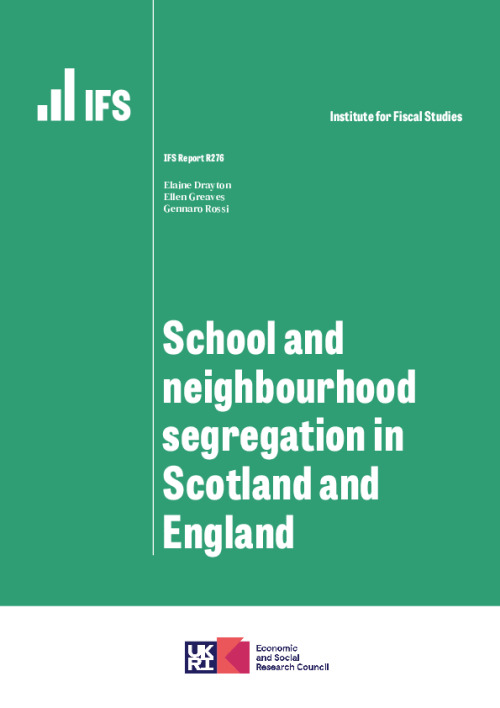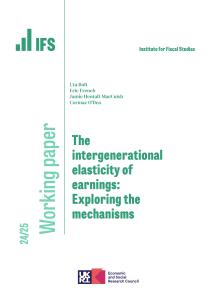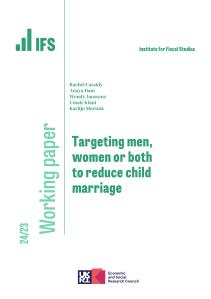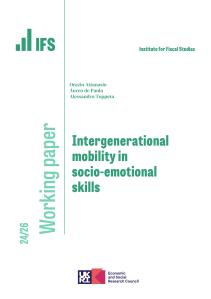Segregation in society can hinder social mobility. For instance, segregated schools can prevent disadvantaged pupils from experiencing high-quality teaching and constructive peer interactions. Segregated neighbourhoods may result in poor access to amenities such as good-quality housing and services.
Segregation is potentially affected by the process of assigning children to schools. If school access is determined solely by residence in a catchment area, higher-performing schools may increase demand for properties in their catchment area. This increase in demand would lead to higher property prices, in turn shaping the socio-economic composition of the neighbourhood as lower-income households are ‘priced out’. This neighbourhood sorting would then be reflected in the composition of the schools: high-income neighbourhoods imply schools with high-income intakes, and vice versa.
Conversely, if households have the option to attend any school regardless of their address, there would be weaker incentives to sort into particular neighbourhoods. In turn, this would weaken the link between school and neighbourhood socio-economic composition.
We focus on England and Scotland to understand how pupil school assignment policies influence school and neighbourhood segregation, and the interaction between them. These two nations of the UK are institutionally and culturally very similar, but have very different systems to assign pupils to schools. In Scotland, the criterion is purely geographical: each school has a pre-determined set of postcodes (the catchment area) whose residents are automatically entitled to attend that school.
In contrast, households in England have more choice: any pupil can choose any school, and no pupil has any default or guaranteed school. Although 60% of schools in England have a pre-defined catchment area, this is only one factor that gives pupils priority if the school is over-subscribed, rather than guaranteeing admission.
Documenting patterns of neighbourhood and secondary school segregation across England and Scotland, we find the following.
Key findings
1. Income segregation in neighbourhoods is similar in Scotland and England. The spread of residents who are income-deprived is broadly similar across the two countries. According to the index of dissimilarity, 31% of residents in Scotland and 29% in England would need to move neighbourhoods to achieve an equal distribution of low-income residents. That said, there are more neighbourhoods in Scotland with very low levels of income deprivation relative to England.
2. English schools are more segregated by income than Scottish schools. Despite similar residential segregation, schools in England are more segregated. Using pupils eligible for free school meals (FSM) to proxy for low income, England has both more schools with very low shares of FSM pupils and very high shares compared with Scotland. The index of dissimilarity indicates 22% of pupils would need to be reallocated across schools to achieve an equal distribution of low-income pupils in England. This figure is only 17% in Scotland.
3. Neighbourhood composition shapes school composition more strongly in Scotland. In both countries, the correlation between school and neighbourhood segregation is positive. This link is stronger in Scotland compared with England, however (0.72 versus 0.53). This suggests that Scottish schools are more representative of their local areas. Indeed, around half of the variation in segregation across schools is explained by variation in neighbourhood segregation in Scotland. The equivalent figure is 28% for England. This is likely due to the strict catchment system in Scotland. Despite this, other processes in England lead to higher school segregation overall.
4. Incentives to sort into areas with ‘better’ schools translate into higher house prices, and more so in Scotland. In both countries, there is a positive association between house prices and local school performance (correlation of 0.31 and 0.4 in England and Scotland, respectively). This relationship is not causal, as other factors could be correlated with both neighbourhood and school quality.
5. To isolate the effect of school quality on residential sorting causally, we compare neighbourhoods just either side of catchment boundaries. Here, within a small geographical area, the only difference in neighbourhood ‘amenities’ should be the school quality of the catchment area school. In both countries, there is a property price premium on the side of the catchment area boundary with the higher-performing school. This premium is higher in Scotland (8%) relative to England (3%), however, suggesting stronger demand in desirable catchment areas.
6. Household composition also differs across catchment area boundaries, and to a greater extent in Scotland. For example, the share of households in a professional occupation is 2.4 percentage points higher in Scotland on the high-performing side of the boundary, compared to 0.9 percentage points in England. These differences in the extent of neighbourhood sorting across countries suggest that school assignment policies could affect the composition of neighbourhoods as well as schools.
7. Taken together, these findings suggest that school choice environment is related to levels of segregation, though future work will address this link more causally. To implement effective policies to reduce segregation and improve social mobility, it is essential to consider the interplay between school and neighbourhood choice, and how they are affected by the policy environment.













